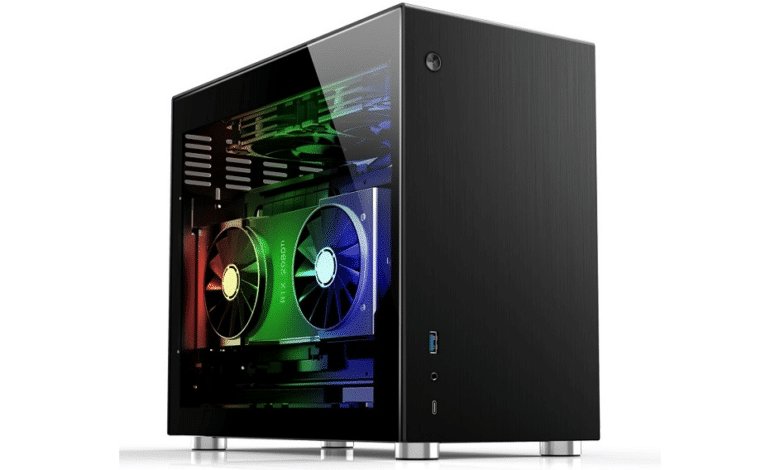
The name Jonsbo stands for a world-renowned Chinese manufacturer of computer components. In addition to ATX and ITX cases, the product portfolio now also includes CPU coolers and AiO water cooling systems. Jonsbo focuses on a particularly extravagant design, which at the same time does not forget the purpose of the case. The UMX series is particularly well known. Meanwhile, the manufacturer has also significantly expanded the increasingly important ITX segment.
In February of this year, the manufacturer expanded its ITX portfolio with a new case. This one goes by the name of V10 and has less of a small footprint and more hardware compatibility in mind. With a volume of about 18 liters, it is supposed to offer more space for potent components and also look elegant due to its aluminum shell. The Jonsbo V10 is available in black and silver and with or without tempered glass. Regardless of the variant, Jonsbo charges € 99.90 * for the V10. Find out whether the Jonsbo V10 can be recommended for this in this review.
Technical details
| Model: | Jonsbo V10 |
| Case Type: | ITX |
| Dimensions: | 174 mm (W) x 304 mm (H) x 344 mm (D) |
| Weight: | 3 kg |
| Material: | Aluminum, steel |
| Color: | Black |
| Front connectors | 1x USB 3.1 Type-C, 1x USB 3.0 Type-A, 1x 3.5mm jack (audio in/out) |
| Drive bays: | 2x 2.5″ (internal) |
| Expansion slots: | 2x vertical |
| Form Factors: | ITX |
| Ventilation: | Lid: 2x 120 mm Bottom: 2x 120 mm |
| Radiators: | Lid: 1x 240 mm |
| Max. CPU cooler height: | 75 mm |
| Max. Graphics card length: | 330 mm |
| Max. Graphics card height: | 60 mm |
| Max. Net part length: | SFX/ SFX-L/ ATX (up to 150 mm) |
| Price: | € 99.90 * |
| Features: | Dust filter, PCIe-3.0 x16 riser |
Scope of delivery
Jonsbo packages the V10 in a plain brown cardboard box with black labeling for transport. Printed on the box are two schematic drawings, the main technical specifications, and of course the chassis name. Inside, the SFF chassis has been encased in a sheet of plastic and two soft blocks of foam. These should protect the V10 wonderfully from damage during transport. The included accessories are located directly inside the case in a plastic bag on the one hand and directly in the main carton next to the V10 on the other. There is a bag with all the necessary screws and some cable ties, as well as a PCIe 3.0 riser cable and a printed installation guide with pictures and text. Lastly, the V10 comes with a magnetic dust filter for the bottom.
Exterior impression
As is so often the case with Jonsbo, the exterior of the V10 has been designed to be very elegant and timeless. On the outside, the manufacturer has used fully brushed aluminum. This looks very chic, but is also a magnet for fingerprints. The front is completely closed and does not offer any ventilation options. The front could theoretically be removed via several screws on the inside. However, this is not necessary. Jonsbo has also placed the I/O panel on the front. This has 2x USB (1x USB 3.0 Type-C, 1x USB 3.0 Type-A), an HD audio combo port and a power button.
If you lift your gaze, you should immediately notice the well-ventilated lid. Equipped with numerous vents, its design should be able to ensure the removal of warm air from the interior well. Two optional 120-millimeter fans, which can be placed underneath the lid, should enable the air transport. They are attached from the inside by means of a pull-out frame. However, there is no filter at this point.
The aluminum side panels have the same vents as the lid. This is also important, as the GPU and CPU cooler are placed directly behind them. But more about that later. The side panels are attached via two screws on the bottom. Therefore, you have to put the V10 on its side and remove the two screws. After that, you can pull the side panels downwards. To reduce vibrations, both side panels rest on several strips of foam rubber.
The back of the SFF chassis directly shows the layout that Jonsbo has chosen for the V10. As with many ITX cases, the manufacturer relies on a sandwich layout with two chambers and a riser cable as a connection. On the left side is the opening for the I/O shield of the motherboard and on the right side are two reusable PCI slot bezels. They are mounted outside the case with two screws. Apart from that, Jonsbo has equipped the back with numerous ventilation openings and the plug for the power cable.
The bottom of the V10 is completely covered by a magnetic dust filter. This is made of mesh and should sufficiently protect the interior from coarser dirt. This is also necessary since the V10 is designed on the underside so that two additional 120 millimeter fans can be mounted there. The design of the corresponding openings is designed for a high airflow and therefore only has four struts and a point in the center of the fan hub. The V10 is given a secure stand by four silver plastic feet, which have been covered with a layer of rubber to protect the surface.
The exterior finish is of a very high standard. All aluminum parts are neatly finished and joined together. There are no paint or other processing defects.
Interior impression
As mentioned earlier, Jonsbo divides the interior into two chambers of different sizes. The subdivision here is done by a mainboard tray made of steel. This has been provided with a large opening for backplates of CPU coolers and numerous other small cable management openings. Despite the many openings, the tray has a decent stability. Besides an ITX mainboard, there is also room for an ATX PSU in the right chamber. After installation via the PSU frame, the power plug can still be easily removed or the on/off switch of the power supply can be reached without any problems. The optional ceiling fans can be mounted if the corresponding frame in the lid is removed using two screws.
The left chamber offers space for a long graphics card, which may also be almost three slots high. At the bottom of the motherboard tray, Jonsbo has neatly pre-routed the power cable and leads it up in the right place. In the front area, the boards of the power button and the I/O panel can be seen. Despite the Type-C connector in the front, a single cable with an internal USB 3.0 header can be found inside.
Jonsbo has reduced the mounting of data carriers inside the V10 to a minimum. Only two 2.5″ SSDs or HDDs can be accommodated in the base. The mounting is done within a steel frame using four screws per data carrier. To equip the cage, it has to be removed beforehand. To do this, you only have to loosen three screws on the underside.
Even though “only” steel is used in the interior, Jonsbo has chosen its material thickness well and also processed the material cleanly. There are no sharp edges or paint defects that would spoil the good overall impression.
System installation in the Jonsbo V10
Now we come to the system build. For hardware, we are using an AMD Ryzen 7 3700X* on a Gigabyte B450I AORUS WIFI with 32GB Crucial Ballistix Sport. The Ryzen is cooled by a Noctua NH-L12 S1 Ghost* and is not overclocked. A GTX 1060 6GB from Gigabyte AORUS is responsible for the image output. The power supply is handled by the fully modular Corsair SF450 Gold with an 80 Plus Gold efficiency rating.
The installation of the test system went smoothly and was done quickly. Starting with the installation of the motherboard and cabling, followed by the installation of the PSU and finally the installation of the riser cable and graphics card. The eyelets on the PSU frame and the openings behind the PSU make routing the cables much easier. If you install an SFX instead of an ATX PSU, there is also more room for routing the cables. The overall result looks quite decent.
Overall hardware compatibility, due to the slightly larger footprint, is obviously better than other SFF cases. Thus, there is a maximum of 75 millimeters of space for CPU air coolers and 330 millimeters for graphics cards. In addition, there is a height of 60 millimeters for the pixel accelerator. Together, that’s not enough for every graphics card, but still offers room for one or two high-end graphics cards. An ATX power supply with a maximum length of 150 millimeters can take over the power supply. If you also want to do something good for your CPU, you can install a 240 AiO water cooler in the lid of the Jonsbo V10.
Finally, we come to the temperatures that were reached in the Jonsbo V10. Prime95 and FurMark were run for 15 minutes at a room temperature of 25°C during the stress test. Furthermore, the test was run in a total of five different scenarios.
Scenario |
Temperature |
| CPU: 50% PWM (1300 rpm) GPU: 50% PWM (1650 rpm) Without fan (default configuration) |
CPU: 95 °C (clocks down to 3.4 GHz) GPU: 84 °C |
| CPU: 50% (1300 rpm) GPU: 50% PWM (1650 rpm) 2x 120 mm on 50% (1100 rpm), 2x blowing out in the lid |
CPU: 86 °C GPU: 71 °C |
| CPU: 50% (1300 rpm) GPU: 50% PWM (1650 rpm) 4x 120 mm at 50% (1100 rpm), 2x blowing out. 2x blowing in |
CPU: 85 °C GPU: 70 °C |
| CPU: 50% (1300 rpm) GPU: 50% PWM (1650 rpm) 4x 120 mm on 100% (1800 rpm), 2x blowing out. 2x blowing in |
CPU: 80 °C GPU: 67 °C |
| CPU: Auto (max. 1900 rpm) GPU: Auto PWM (max. 1700 rpm). 4x 120 mm on Auto (max 1600 rpm), 2x blowing out. 2x blowing in |
CPU: 75 °C GPU: 68 °C |
Completely without additional case fans and with reduced fan speeds on the CPU and GPU, the V10 struggles quite a bit in cooling the components. The processor in particular gets significantly warmer than desired. Things look much better as soon as at least two fans are placed in the lid. This could reduce the temperatures of both components by almost 10 degrees. If you now consider that an AiO water cooling system optionally fits into the V10, these are good conditions to also accommodate somewhat stronger hardware in the Jonsbo V10.
Summary of the Jonsbo V10
Let’s now come to the conclusion of the Jonsbo V10. This SFF chassis was able to convince us with its high-quality workmanship, a chic aluminum look and solid features. For an ITX case, it also offers plenty of room for large graphics cards and even a 240 AiO water cooling system. These are both good prerequisites for a stronger gaming system. In addition, there is the good cooling potential and the, with 100 euros (currently € 99.90 *), quite low price for a compact case made of aluminum.
However, the good cooling options and high hardware compatibility also come at a price. For example, the Jonsbo V10 does not have a particularly small footprint for an ITX case with 18 liters. Furthermore, the USB Type-C port is a bit misleading. Inside, this actually terminates in a normal USB 3.0 port. With the exception of these two points, we could not find anything negative about the Jonsbo V10.
For a price of 100 Euros, the Jonsbo V10 offers a high-quality case with plenty of room for ITX hardware. Therefore, we give the Jonsbo V10 a buy recommendation.
Jonsbo V10
Workmanship
Structure
Features
Cooling
Value for money
90/100
The Jonsbo V10 is a high-quality ITX case with a chic aluminum look and relatively much space for hardware. However, with 18 liters, it already belongs to the larger SFF cases.





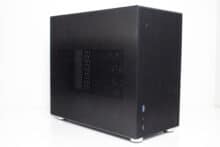


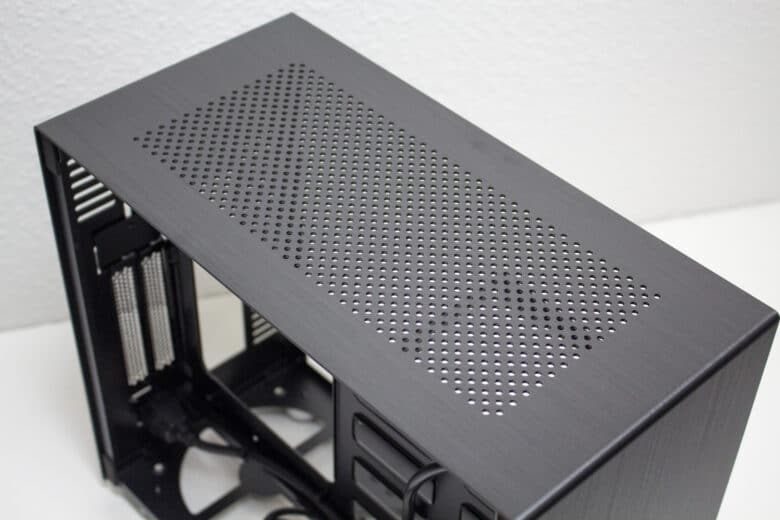
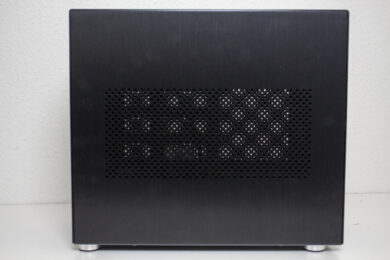
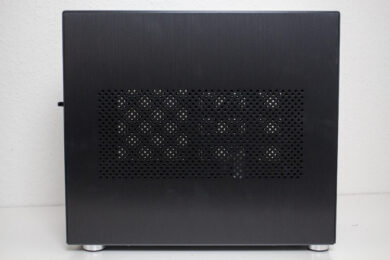
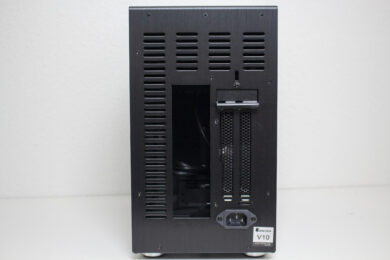
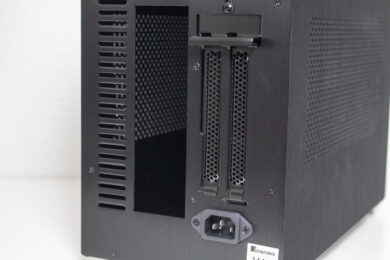

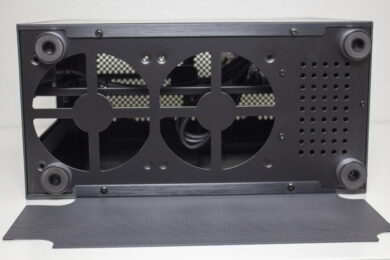
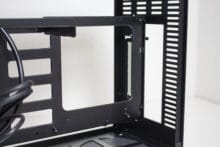

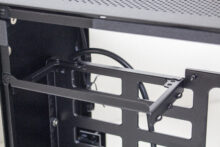




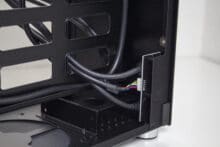
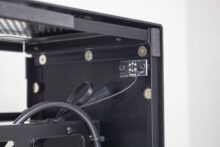
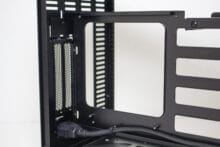
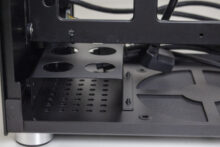
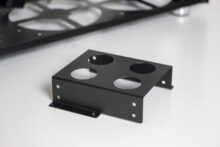
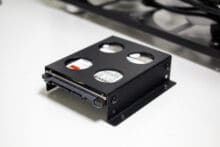
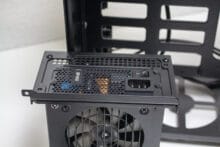
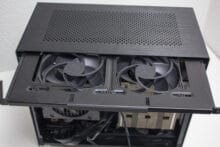

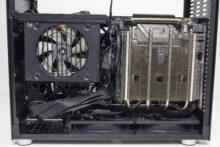





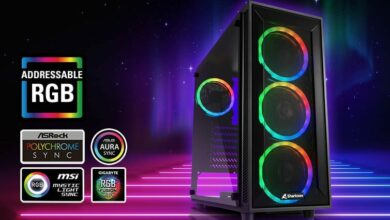
No replies yet
Neue Antworten laden...
Neues Mitglied
Beteilige dich an der Diskussion in der Basic Tutorials Community →